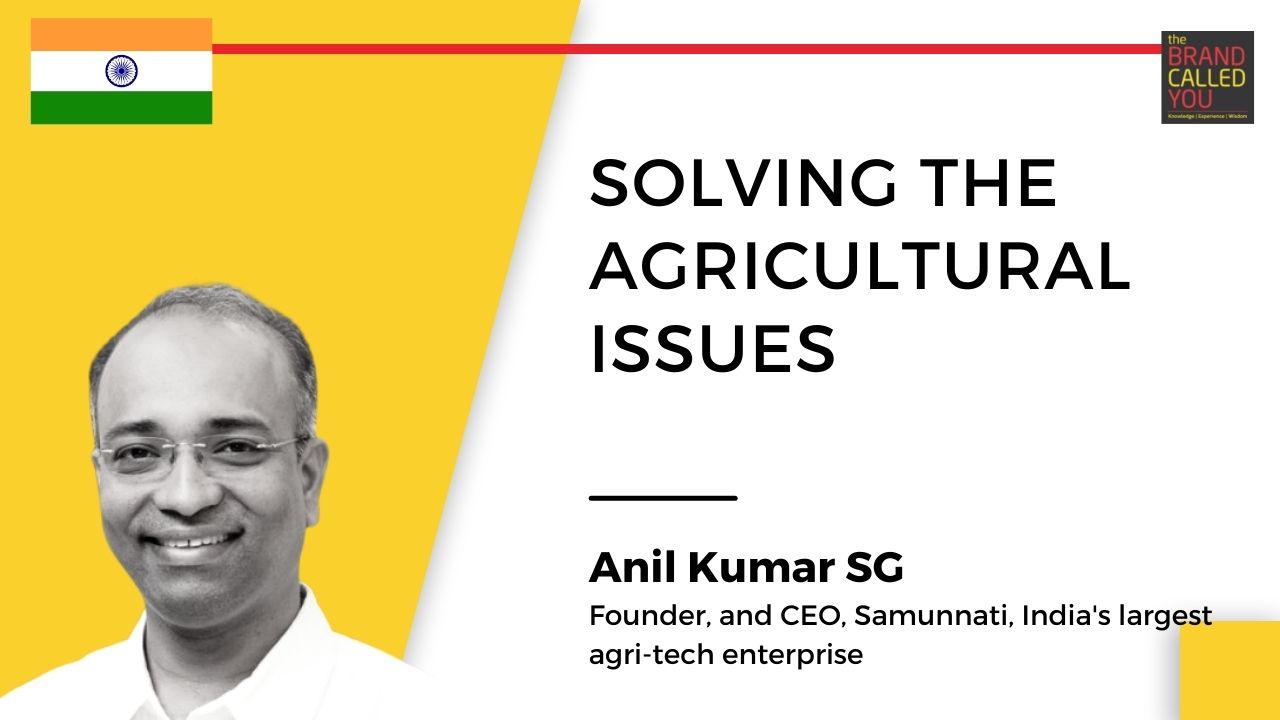Anil Kumar SG, Founder, and CEO, Samunnati, India’s largest agri-tech enterprise
Podcast
Overview
It is said that time makes the best decisions for us. This happened with our guest, Anil Kumar SG, too. Our guest for today, Anil Kumar SG, is the founder and CEO of Samunnati, India’s largest Agri-Tech Enterprise. He says that moving to the Social sector was an accident for him.
He tells us that he started his career when he was 18 with Canara Bank. He had to discontinue his engineering to work. Later, he graduated in humanities and then did his MBA, both from distance learning mode.
He still had a complex that he never went to a college so he took admitted to a college.
He also wanted to change his career to academics so he took GMAT and went to the Manila Asian Institute of Management to do his master’s. There he got to learn about inspirational leadership and realized how microfinancing is changing the lives of people.
At that time, the bank Anil was working in, was doing a lot in microfinance. Anil took it as an opportunity to hone up his experience and do something in Social banking.
This is how Anil’s journey to the Social sector began.
Anil says that “Markets have been working with ‘of’ the farmers. We are replacing the word with ‘for’.” Let us see how he does it.
About Samunnati
Samunnati is an Agri value chain enabler. They are an ecosystem that makes markets work for smallholder farmers. They do it by their AMLA approach of engaging with the farmer. The word AMLA is the acronym for:
A – Aggregation
Samunnati helps farmers by leveraging the power of aggregation
ML – Market Linkage
They bring in the power of market linkages to the farmers
A- Advisory
They also bring in knowledge and advice to the farmers.
Amla is the Hindi word for Indian gooseberry, which is a complete fruit with all six tastes. Anil says that their AMLA approach is similarly a complete structure to help the farmers.
Key issues that most farmers in India face
Anil talks about three key issues that most farmers in India face. They are:
- Fragmented Land Holding
At an individual level, farmers hold fragmented land which is very small.
- Definition of farmer
Anil says that we identify the farmer by the ownership of land and not by who does farming. If a farmer rents a piece of land to do framing, we do not consider him as a farmer, but as a worker.
- Most of our engagement and schemes are designed for the farmers with an ownership perspective and not the activity perspective.
Anil says that one of the significant opportunities and the significant tailwind they are experiencing these days is the agtech companies and the startups that are coming into the agricultural space. However, he believes that the whole ecosystem of the agtech industry is fragmented.
There are sectors like input(seeds, manure), output(procurement of the harvest), financial services, agri-tech players who provide technology, rural marketing agents, advisory services, etc. Anil says that all these segments are the ocean in themselves but are not connected.
It is very difficult for smallholder farmers (87% of India’s total farming population) to connect with all of them. Anil believes that we need an ecosystem to connect the farmers with all the services.
What prevents the farmers from growing high-value products like fruits?
In Anil’s opinion, the reason that prevents the farmers from growing high-value products like fruits is that they are difficult to sell.
He says that if a farmer grows rice or a crop that local farmers are producing, there are well-established logistics for it and he will be able to sell it without any problem. But if he takes risks with high-value products,
- He will first have to experiment, which requires funds. Many of our farmers do not have that risk appetite.
- Logistics have to be developed for that
- Advisory services will have to step in to help farmers
- In all of this, somebody will have to provide safety to the farmers.
Profile
In his current venture, his focus is to make markets work for small holder farmers through Samunnati.


